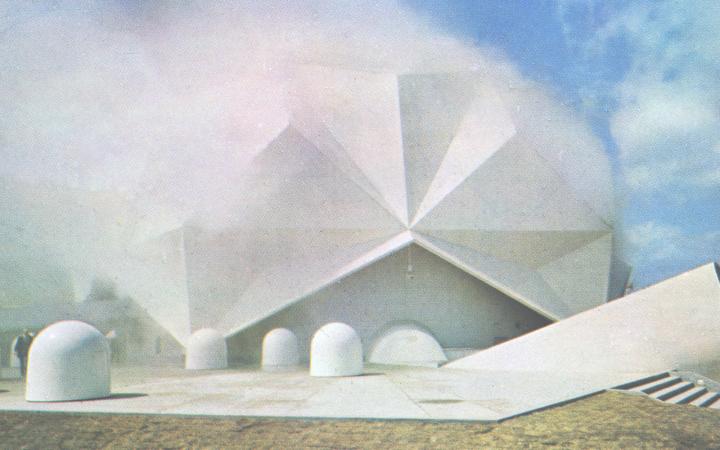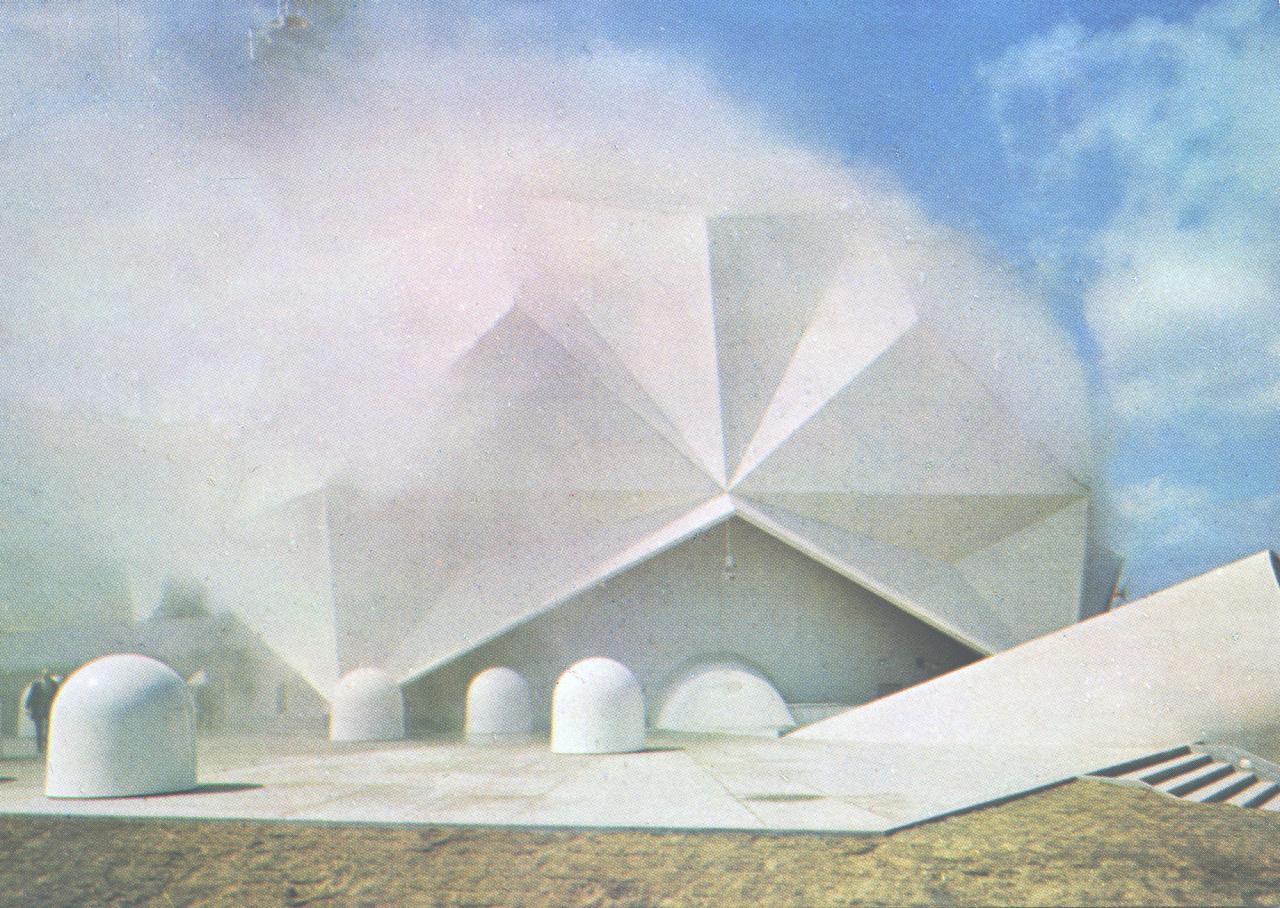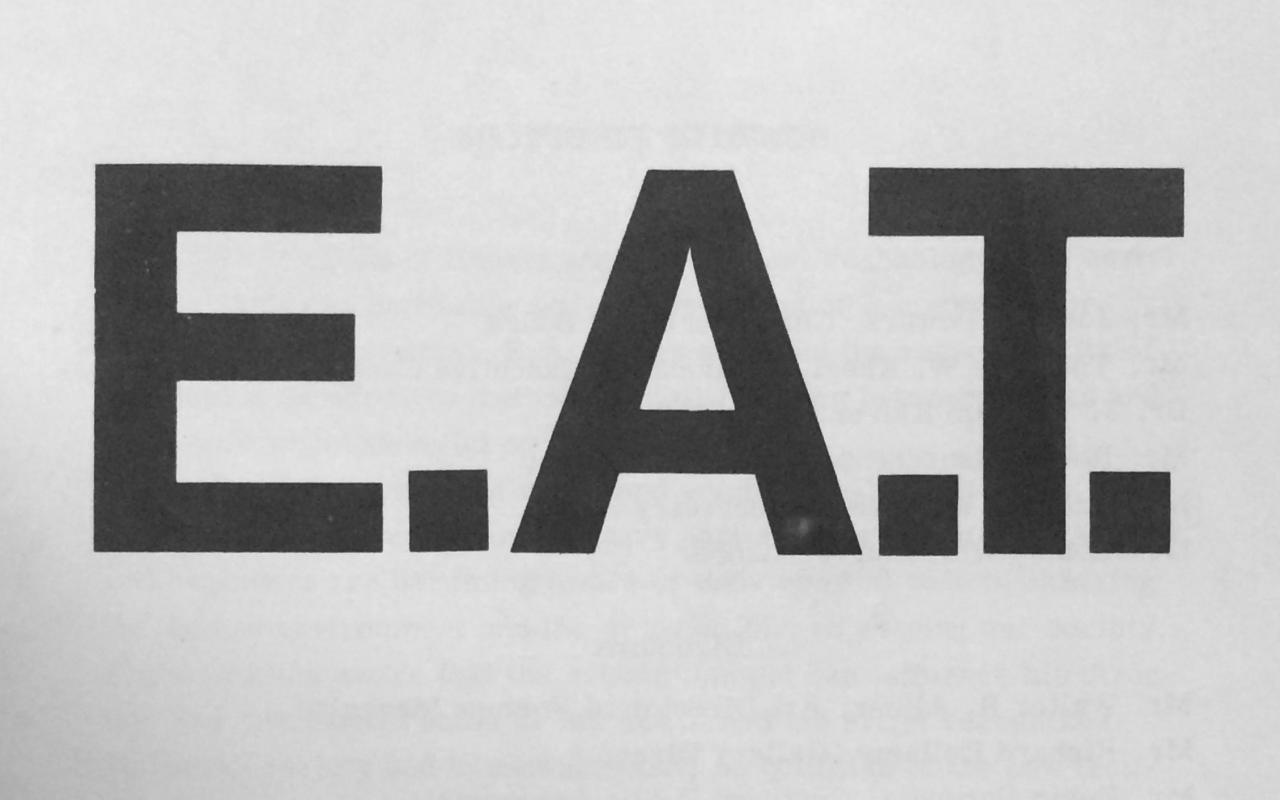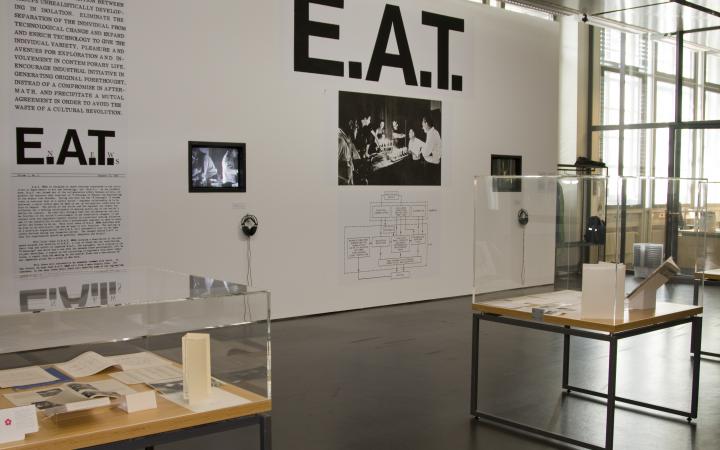Experiments in Art and Technology (E.A.T.)
Archive
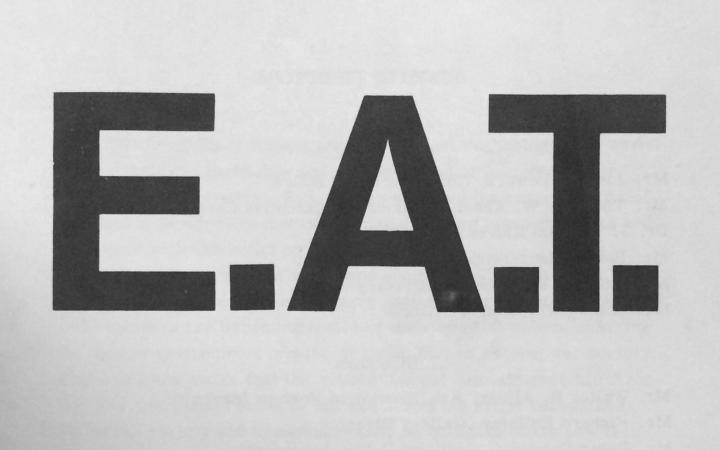
»Experiments in Art and Technology« (E.A.T.) was a non-profit organization founded in New York in 1966 by Bell Laboratories engineers Billy Klüver and Fred Waldhauer and artists Robert Rauschenberg and Robert Whitman. The organization was formed as a result of a series of performances under the title »9 Evenings: Theatre and Engineering» that took place in New York in October 1966.
Billy Klüver began working with Jean Tinguely in New York in the early 1960s, which led to further projects with other artists and engineers, including Robert Rauschenberg, Yvonne Rainer, John Cage and Andy Warhol. »9 Evenings: Theatre and Engineering« began in 1956 with the idea of an exhibition in which artists and engineers would work together. To this end, the two groups worked together for ten months to develop technical devices and systems that were used as an integral part of the artists' performances. Their collaboration resulted in numerous first uses of new technologies in the theatre - both through custom-developed systems and devices and through the innovative use of existing equipment.
In the same year, 1966, the organization »Experiments in Art and Technology« (E.A.T.) was founded to further promote the connection between art and new technologies. The main mission of the organization was to facilitate partnerships between the seemingly disparate worlds, to encourage artists to explore new frontiers in their work, and to encourage engineers to discover their creative side. For the first time, Closed Circuit Television and television projections were used on stage; a fibre optic camera recorded objects in the performers' pockets; an infrared television camera captured the action in total darkness; a Doppler sonar device translated movement into sound; and portable wireless FM transmitters and amplifiers transmitted speech and body sounds to the Armory's speakers. The result was a series of projects that challenged conventional artistic norms and explored the limits of new technologies.
In the late 1960s and 1970s, E.A.T. initiated numerous projects and collaborations and had a lasting influence on the art world. Her work transcended the boundaries of galleries and theatres and extended to public spaces - from cities to outer space. Projects such as the »Pepsi Pavilion« at the 1970 Osaka World's Fair and the »One Million Square Feet of Art« installation at Madison Square Garden in New York City demonstrated E.A.T.'s commitment to crossing boundaries and challenging the status quo of the art world. E.A.T.'s activities continued into the 1990s.
Holdings
In 1980, E.A.T. compiled an archive package of published material. It contains reports, catalogues, newsletters, information sheets, proposals, lectures, announcements and reprints of important articles produced as part of E.A.T.'s activities. Complete sets of this archive have been distributed to major libraries. The original 1980 E.A.T. archive package was later expanded to include newly discovered material. Bard College and the ZKM in Karlsruhe have acquired this collection of documents, and E.A.T. itself still owns some archive boxes.
The archive package "Experiments in Art and Technology" E.A.T. with expanded material has been in house since 1999 and comprises approx. 2 linear metres with approx. 350 distortion units.
